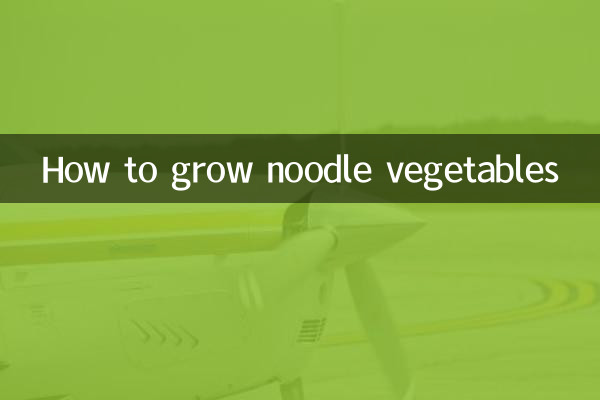How to grow noodle vegetables
Noodleweed, also known as noodle grass or noodle vine, is a common ornamental plant named for its elongated, noodle-like leaves. In recent years, with the rise of home gardening, the cultivation of noodle vegetables has gradually become a hot topic. This article will introduce you to the method of growing noodle vegetables in detail and provide structured data to help you master the planting techniques easily.
1. Basic information about noodle dishes

| property | Details |
|---|---|
| scientific name | Crassula muscosa |
| Family | Crassulaceae |
| country of origin | South Africa |
| growth habits | Likes sunshine, tolerates drought, and is afraid of stagnant water |
| suitable temperature | 15-25℃ |
2. Preparation work before planting
1.soil selection: Noodle dishes do not have high soil requirements, but loose, breathable, and well-drained sandy soil is preferred. You can use special soil for succulents or prepare your own (garden soil: river sand: leaf humus soil = 1:1:1).
2.Container selection: It is recommended to choose a pottery or plastic pot with good air permeability. The bottom of the pot must have drainage holes to avoid water accumulation that may lead to root rot.
3.Seeds or cuttings: Noodle greens can be propagated from seeds or cuttings. Seeds need to be purchased from regular sources, and cuttings can be taken from healthy mother plants.
| Reproduction method | advantage | shortcoming |
|---|---|---|
| seed propagation | Pure variety | Longer growth cycle |
| Propagation by cuttings | Fast growth and high survival rate | A healthy mother plant is required |
3. Planting steps
1.Sow or take cuttings: If you choose seed propagation, spread the seeds evenly on the soil surface and cover with a thin layer of soil; if you choose cuttings, insert the branches about 2-3 cm into the soil and lightly compact the soil.
2.watering: After sowing or cutting, lightly spray water with a watering can to keep the soil slightly moist to avoid water accumulation.
3.Lighting management: Noodle dishes like sunshine and should be placed in a sunny place, such as a balcony or windowsill. Proper shade is required in summer to avoid exposure to the sun.
4.temperature control: The suitable growth temperature for noodle vegetables is 15-25℃. In winter, it needs to be moved indoors to keep the temperature above 5℃.
| growth stage | Lighting requirements | Watering frequency |
|---|---|---|
| seedling stage | scattered light | 1-2 times a week |
| growth period | full sun | 2-3 times a week |
| Dormant period | shade | 1-2 times a month |
4. Daily maintenance
1.watering: Noodle vegetables are drought-tolerant, and watering should follow the principle of “see dry, see wet” to avoid water accumulation. Watering frequency can be appropriately increased when the temperature is high in summer, and watering can be reduced in winter.
2.fertilize: Apply thin succulent-specific fertilizer or compound fertilizer once a month during the growth period, and stop fertilizing during the dormant period.
3.prune: Noodle vegetables grow quickly, and overly dense branches need to be pruned regularly to maintain a beautiful plant shape.
4.Pest and disease control: Noodles are less susceptible to diseases and insect pests. Occasionally there will be aphids or red spider mites. They can be sprayed with soapy water or special chemicals.
| FAQ | reason | Solution |
|---|---|---|
| Leaves turn yellow | Too much water or not enough light | Reduce watering, increase light |
| Leggy branches | Insufficient light | Move to a sunny location |
| Rotten roots | Stagnant water or airtight soil | Replace pots and soil, and prune rotten roots |
5. Harvest and use
Noodle dishes are mainly for ornamental purposes, and their unique leaf shape and emerald green color can add vitality to the home. In addition, noodle dishes can also be used to make small bonsai or landscaped with other succulents.
By following the above steps, you can easily grow noodle vegetables and enjoy the fun of gardening. I wish you success in planting!

check the details

check the details